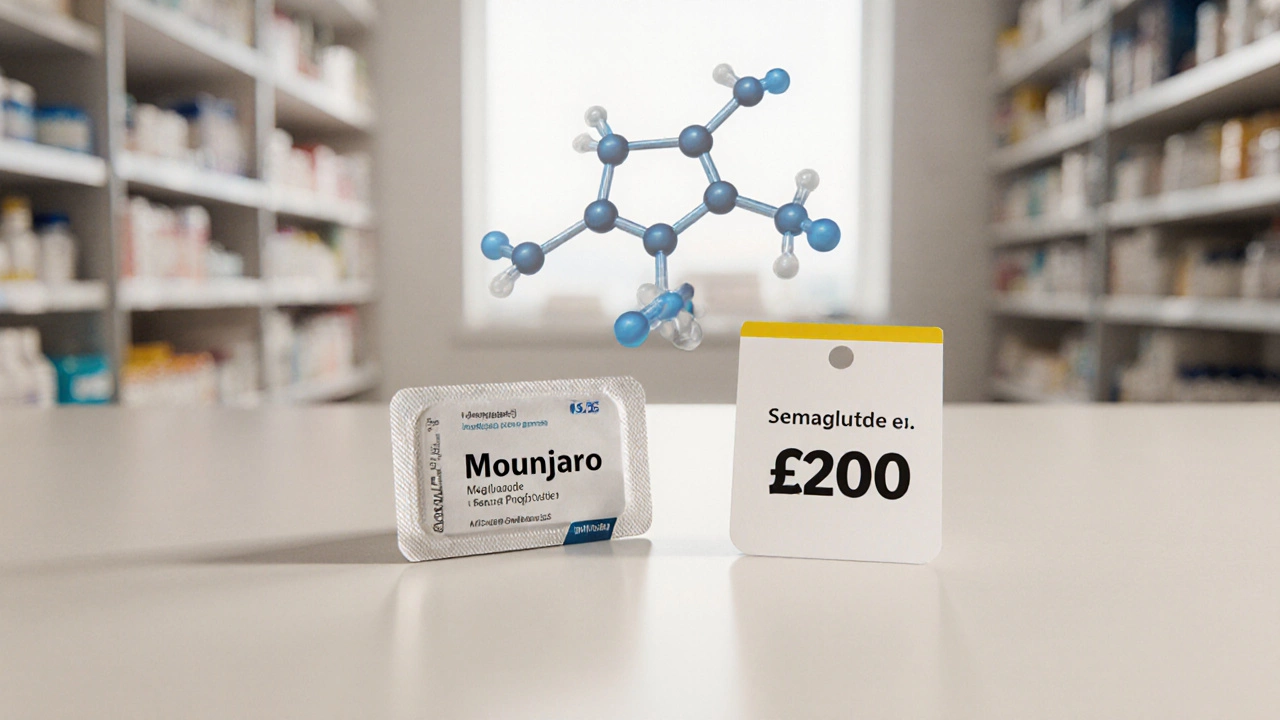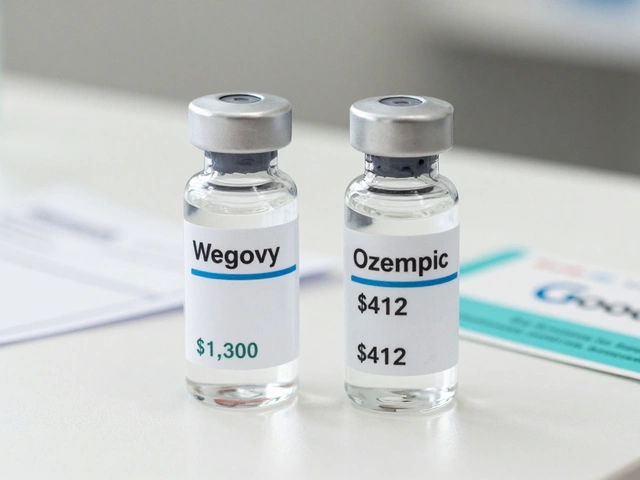Learn how to legally obtain Mounjaro for about $25, avoid scams, and keep costs low with insurance, discount programs, and reputable clinics.
Read MoreMounjaro Price – What You Need to Know Before Buying
Ever wondered why a prescription for Mounjaro price, the amount you pay for the tirzepatide injection in India. Also known as tirzepatide cost feels like a small fortune? You’re not alone. The same drug is marketed as a GLP‑1 agonist, a class of injectable medicines that boost insulin and curb appetite, and it’s also promoted for weight‑loss medication, helping people shed pounds when diet and exercise fall short. Understanding the price tag means looking at the drug itself, the market forces around it, and the alternatives you might consider.
First, the drug’s chemistry matters. Tirzepatide, the active ingredient in Mounjaro, is a dual‑GIP/GLP‑1 receptor agonist. Its production requires sophisticated peptide synthesis, which pushes the manufacturing cost higher than older diabetes pills. That’s why the Mounjaro price often includes a premium for cutting‑edge research. Second, import duties and regulatory fees add an extra layer. In India, many GLP‑1 drugs are classified as “new molecular entities,” so customs levies can be steep. Third, clinics and pharmacies add their own markup to cover storage (the drug needs refrigeration) and professional counseling. All these factors combine to create a price that can range from INR 9,000 to INR 12,000 per pen, depending on location and supplier.
What Drives Mounjaro Cost in India?
Beyond manufacturing, three key drivers shape the final bill. Supply chain transparency matters: when a reputable distributor sources directly from the manufacturer, the price tends to be lower than when a middle‑man inflates margins. Insurance coverage is another variable; some private health plans now list GLP‑1 agonists under chronic disease benefits, but many still treat them as elective weight‑loss drugs, leaving patients to pay out‑of‑pocket. Finally, patient volume influences bulk discounts – larger clinics that prescribe Mounjaro to many patients can negotiate better rates, shaving off a few hundred rupees per pen. Knowing these levers helps you ask the right questions at the pharmacy and potentially negotiate a better deal.
Comparing Mounjaro to other GLP‑1 agents gives perspective. Semaglutide, sold as Ozempic or Wegovy, typically costs a bit less per dose but requires weekly injections instead of once‑weekly for Mounjaro, affecting total monthly spend. Dulaglutide (Trulicity) is another alternative with a similar price range but differing efficacy for weight loss. In semantic terms, the Mounjaro price encompasses the cost of tirzepatide, the clinic markup, and the taxes imposed on GLP‑1 drugs. It also influences patient decisions about whether to switch to cheaper insulin analogues or pursue lifestyle programs.
So how can you keep the expense manageable? Look for accredited discount programs run by pharmaceutical companies – they often offer “patient assistance” vouchers for low‑income earners. Online pharmacies with verified certifications sometimes list the same product at a 10‑15% lower price, but always check the cold‑chain integrity. Another tip: ask your doctor if a lower dose meets your therapeutic goals; many patients achieve good glycemic control with a half‑pen regimen, cutting the price in half. Finally, consider bundling the Mounjaro purchase with routine lab tests, as some diagnostic labs negotiate package rates that include the medication.
Below you’ll find a curated set of articles that break down the latest Mounjaro price trends, compare tirzepatide to other GLP‑1 drugs, explore insurance options, and share practical ways to lower your out‑of‑pocket costs. Dive in to get the facts you need before you sign the prescription pad.





